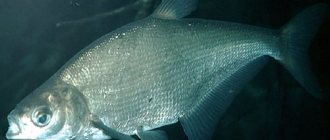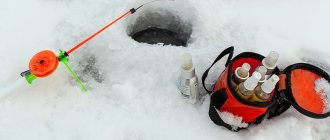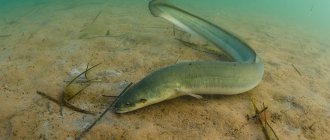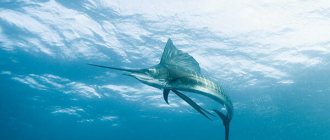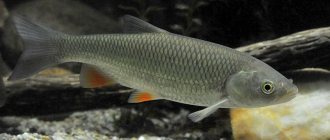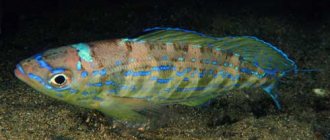Beneficial features
Ide is rich in protein compounds, vitamins, essential amino acids (riptophan, lysine, methionine and taurine) and minerals such as potassium, iron, calcium, sodium, fluorine and chromium.
This fish is suitable for dietary nutrition. It helps strengthen teeth, bones, and cope with heart disease and ulcers.
Balyk
Balyk is salted fish. The delicacy is quite tender and pleasant to the taste. The ingredients are designed to prepare 6-8 servings of fish delicacy.
To prepare balyk you will need the following components:
- 1 ide fillet with skin;
- 4 tbsp. l. table salt;
- 2 tbsp. l. granulated sugar.
Stages of preparing balyk:
- The ide fillet must be placed under cold water, dried using paper towels, divided into 2 parts using a kitchen knife, transferred to a deep bowl and covered with salt and sugar. The pieces should be evenly coated with salt and sugar.
- Place 2 pieces of ide in a container, back up, place in the refrigerator and leave there for 24 hours. After the specified time, you will need to pour out the liquid that appeared in the fish.
- You should put a newspaper on the table, straighten it, put the prepared pieces of ide on it, wrap them in newspaper, then transfer them to a cloth and put them in the refrigerator, placing pressure on top.
- When 48 hours have passed, the balyk can be removed from the refrigerator.
To prepare balyk, you can use crushed black pepper, coriander, cloves, bay leaves, and allspice peas.
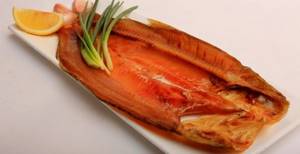
Balyk should be cut into slices, served as slices, or used to make sandwiches.
Lifestyle
Lifestyle of ide Lives in rivers and flowing lakes.
Prefers deep backwaters, holes, whirlpools, floodplain reservoirs with clay and silted bottoms, connected to the river. A schooling fish, it can make feeding, spawning and wintering migrations over considerable distances (up to several hundred km). In early spring, it leaves its wintering grounds to the shores, rises along rivers to spawning grounds on rocky rifts. The food of ide is varied - mollusks, crustaceans, earthworms, insect larvae, small fish, and in summer plant foods become of great importance in nutrition. The ide is very careful, reacts instantly to noise, stops or moves back at the slightest danger, and often overcomes obstacles, jumping out of the water into the air. When fishing with seine, it often goes under the net in a flock and avoids capture. The sense of smell is highly developed and is attracted to odorous baits. Overwinters in deep places where there is weak flow.
Ide is resistant to sudden temperature changes and water pollution, although it prefers to stick to those places where there are key and spring sources.
Favorite habitats on moderate currents are whirlpools, holes below riffles, pits under bushes hanging over the water. It likes to stay on the border between fast currents and calm waters, where there is a lot of different food, including fry, which the ide does not disdain. It often approaches the mouths of rivers, rivers and even streams, where it rushes in pursuit of insects (as a rule, this is typical of roaches).
In rivers it feeds mainly at night and in the early morning and evening dawns, entering shallows with sand and pebble or clay, sometimes with muddy bottom.
The ide is omnivorous: it eats plankton and benthos, in the spring it prefers bloodworms, worms, mormysh and other living creatures, and in the summer it adds insects to its “diet” - grasshoppers, dragonflies and their larvae, greens, mulberry, and young shoots of reeds. But it can also become a predator, especially in the fall, when it does not gain enough fat for the upcoming winter.
The ides of lakes and reservoirs feed mainly at dawn, but often fatten during the day, especially roaches.
Fried breaded with onions
It takes 30 minutes to prepare the dish.
List of ingredients needed for cooking:
- 500 g ide;
- 3 tbsp. l. breadcrumbs;
- 1 large onion;
- 6 tbsp. l. sunflower oil;
- 1 bunch of dill;
- salt;
- fresh ground pepper.
Ide is a fish (photo and description are in this article), which is cooked in a frying pan and breaded in this way:
- Using scissors, you need to cut off the ide's head, fins and tail, rinse the carcass under cold water, dry it using a dry towel and make several cuts on it at a distance of 1.5 cm from each other.
- The prepared carcass must be sprinkled with a small amount of table salt and pepper, rub the spices into the cuts made and marinate it for at least 7 minutes, leaving it at room temperature.
- A large onion should be peeled, chopped into small cubes and poured into a heated frying pan, greased with oil. You will need to fry the chopped onion until it becomes transparent.
- Dill should be washed in running water, dried with napkins, added to the transparent onion, mixed and filled with the resulting mixture into the ide carcass using a teaspoon.
- Pour breadcrumbs onto the parchment and roll the ide carcass in them on each side. You will need to heat the frying pan, grease it with oil, place the ide stuffed with onions and dill in it, and fry for 7 minutes. on each side and place on paper towels to drain excess oil.
- Before serving, you need to cover the plate with lettuce leaves, put ide on top, garnish it with lemon slices and dill sprigs.
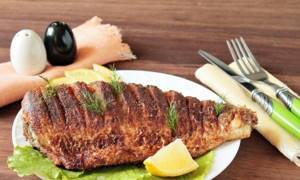
Ready.
Spreading
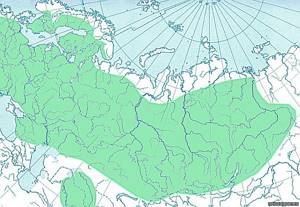
Rice. 1. Distribution area of ide.
Ide is widespread in Eurasia. It is found over a vast territory - from the Rhine to the Lena, its range covers part of Europe, the Urals, Eastern Siberia and most of Western Siberia. Ide is found in the river basins of the Arctic Ocean and the Black Sea, as well as in the northern part of the Caspian basin - in the Volga, Ural, Emba rivers and their tributaries. The most abundant ide is in Siberian rivers, as well as in the Volga basin. There is no ide in southern and southwestern Europe; it is not found in the Crimea, the Caucasus and Transcaucasia.
At one time, ide was brought to North America - to the United States, where it was released into the reservoirs of Connecticut. There it has taken root well and is currently a popular object of amateur fishing.
Habitats
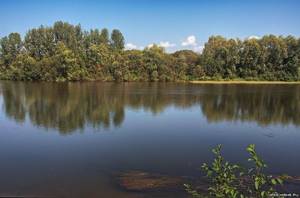
Photo 2. A deep, lowland river with a quiet current and great depths is a typical habitat for ide.
Ide is found in deep rivers and flowing reservoirs. In the first, it prefers flat areas with slow currents and deep places - mainly with a muddy or clay bottom, as well as thickets of underwater plants. It lives in creeks, on deep reaches and in whirlpools, where the current is quiet or completely absent. He does not like mountain rivers with fast and cold water and tries to avoid such places.
Ide is also found in ponds, reservoirs and lakes, especially preferring floodplain reservoirs connected to the river by channels. It can inhabit the estuary bays of seas with brackish water. In small standing reservoirs, ide is not found.
Ide in the Urals
In the Middle Urals, ide is often found in the rivers of the Ob-Irtysh (Tavda, Tura) and Volga-Kama (Ufa) basins, as well as their tributaries. In Chusovaya it is found in the area from the outlet of the Volchikha Reservoir to the Sazhinsky Bridge; downstream the chance of catching it is somewhat less - due to the mountainous nature of the river. In Sylva, the situation with this fish previously was approximately similar, but recently its population has been severely undermined by poaching flourishing on the river.
In large Ural reservoirs, ide is found in Lake Tavatuy (populated artificially), as well as in the Volchikha Reservoir.
Ear
It will take 40 minutes to prepare the fish soup.
To prepare fish soup, you need to stock up on:
- 600 g ide;
- 200 g potatoes;
- 2 bay leaves;
- 1 onion;
- 1.5 liters of water;
- 2 tbsp. l. vodka;
- 1 bunch of dill;
- salt and pepper;
- green onions.
Instructions on how to prepare fish soup:
- The ide needs to be washed, placed under water, the scales removed, put it in a saucepan, add water and cook the broth after boiling for approximately 5-7 minutes. Using a sieve, you will need to strain the resulting broth and return it to the fire.
- Using scissors or a knife, you need to cut off the ide's head, fins and tail. The carcass itself will need to be cut into portions. The cut parts must be placed in the broth, boiled and simmered for 7-10 minutes. over moderate heat.
- You need to put the potatoes under water, peel them using a vegetable peeler, place them on a cutting board and cut them into medium-sized cubes. You can strain the cooked broth using a sieve, add peeled chopped potatoes into it, add washed dill, stir and cook the soup until the potatoes are half cooked.
- A large onion should be peeled, chopped into small cubes and added to the soup. This will make the soup flavorful. After 5 min. you need to add a little salt, add pieces of ide and boil them for 7 minutes.
- When 7 minutes have passed, you can add bay leaves, pour in vodka, remove the soup from the stove and leave it covered for 20 minutes to let it brew. Afterwards, the bunch of dill and bay leaves need to be removed from the soup.
- The finished soup will need to be poured into bowls and served, garnished with green onions.
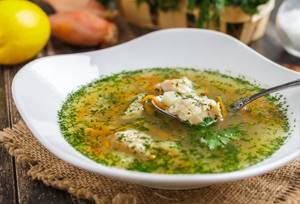
Ready.
Age, size, spawning
The average weight of the fish is 1.5-2 kg, but there are specimens 3-4 times larger. The ide is especially beautiful in the spring in its nuptial plumage, shimmering with a metallic sheen with golden highlights.
It becomes sexually mature at 3-5 years, as a rule, this depends on the characteristics of the reservoir and its food supply. It spawns quite early, immediately after the pike, at a water temperature of 6-8°. According to popular belief, spawning begins at the time when the first leaves bloom on the birch tree.
River ide often spawns in floodplains on coastal ridges, dumps and other bottom irregularities, as well as on riffles strewn with large pebbles, stones, and plant debris. The average depth at the spawning ground is 50-80 cm.
Lake ide prefers reeds for spawning, a depth of 40-70 cm. Fertility ranges from 38 to 120 thousand eggs - this depends on the age and weight of the female. The caviar is yellowish, the size of a millet grain. In favorable weather, spawning begins in the evening and lasts until the morning. The diameter of the eggs before the start of spawning reaches 1.5-2 mm. The number of eggs laid by different females is not the same. About 128 thousand of them were found in a female 39 cm long. In the spawning herd, males are almost twice as numerous as females.
Braised in beer
| Main Ingredients | Ingredients for marinade |
| 2 ide | 3 tbsp. l. vinegar 3-4% |
| 500 ml light beer | salt |
| 1 piece of bread | crushed black pepper |
| 2 tbsp. l. raisins | |
| 3 tbsp. l. oils | |
| 5 allspice peas | |
| 1 tbsp. l. dried dill |
Ide is a fish (photo and description can be found at the beginning of the article), which is prepared in beer in the following way:
- In cold water, you need to wash both ides, remove the entrails, head, fins and tail, place on a kitchen board and coarsely cut into pieces of the same size. The resulting pieces must be placed in a deep container, covered with salt and pepper, vinegar added to them, mixed and marinated for 1-2 hours.
- Pickled ide pieces should be placed in a saucepan, sprinkled with spices, then put in a small piece of bread, add washed raisins, pour in oil, pour in light beer and mix thoroughly.
- The pan with the contents will need to be placed on moderate heat and the dish cooked for 20-30 minutes. Afterwards, the fish in beer needs to be cooled, placed on plates, decorated with vegetables and herbs and served. Boiled potatoes or rice are suitable as a side dish.
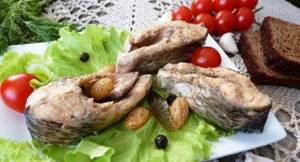
Ready.
Lifestyle and nutritional habits
Ide remains biologically active throughout the year, without going into real hibernation. Only a pronounced “deaf season” with severe February frosts, windy weather and thick ice becomes the cause of short-term suspended animation in free deep holes. The constant “partner” in the forced feeding downtime is another all-season glutton – perch, whose life processes slow down under similar external factors.
To learn more:
Rudd: description of fish and differences from roach
Young roaches stay in large flocks near the coastal zone. Areas with dense aquatic vegetation, a complex bottom with plenty of shelter, and snags are selected as permanent locations. Large individuals are very cautious, afraid of noise, and love safe, wide reaches with a slow current and considerable depth. At the same time, they avoid walls made of reeds and “windows” among water lilies, avoiding encounters with large pike.
Beginner fishermen are interested in knowing whether the ide is a predator or not in order to select a catchable bait. Among peaceful carp representatives, only the asp has the exceptional status of a carnivorous “white crow”, which in the gastronomic aspect gives preference to the grown-up fry and underyearlings of its own and other species. During the hunt, the fast-moving fish quickly catches up with a medium-sized prey, crushes it with a blow of its tail and instantly swallows it thanks to its huge mouth.
The ide is a universal eater with a semi-carnivorous lifestyle, which, depending on the seasonality and characteristics of the food supply, can behave as a benthophage or planktonophage, feeding from the bottom or surface, respectively.
The main diet includes:
- zooplankton, rotifers, daphnia, brine shrimp (at the young roach stage);
- crustaceans, mollusks, leeches, tadpoles;
- cereal grains and legumes, corn, young shoots (in warm water);
- worms, bloodworms, chironomid larvae, dragonflies and caddisflies;
- mayflies, beetles, grasshoppers, hymenoptera and other insects falling into the water.
At a body length of 15-20 cm, moderately predatory tendencies begin to appear. The object of the hunt is the fry of gudgeon, bleak, roach, and crucian carp. Thanks to such an energy-efficient food additive, fish are freed from a key behavioral disadvantage characteristic of herbivorous representatives of the ichthyofauna - a constant feeling of hunger amid a round-the-clock search for food.
With potatoes
The cooking process will take 60 minutes. There are enough ingredients to prepare 4 servings of the dish.
List of main ingredients:
- 1 ide;
- 1 medium sized carrot;
- 1 kg of potatoes;
- 1 onion;
- 2 tbsp. l. sunflower oil;
- fresh ground pepper;
- salt.
Cooking diagram:
- The first step is to take the ide, wash it in cool water, remove the scales, cut out the insides and dry it using paper napkins. In a separate bowl, add table salt, ground pepper, add mayonnaise and mix well.
- At this time, it is necessary to coat the baking sheet with sunflower oil, transfer the prepared carcass onto it, remove the peel from the onion, chop it into half rings and cover the ide with onion half rings.
- Afterwards, you need to wash the carrots, peel them using a vegetable peeler, chop them into slices and place them on top of the onion half rings. Rinse the potatoes under water, peel them using a vegetable peeler, place them on a cutting board and cut into medium-sized circles.
- Place the chopped potatoes on top of the vegetables on a baking sheet, sprinkle with a little salt, brush the potatoes with oil using a pastry brush and place in an oven preheated to 220°C, down for 15 minutes.
- After 15 min. Move the pan to the top and cook until golden brown, 20 minutes. It is important not to dry it out.
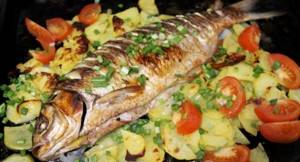
Ready.
On the grill
Ingredients needed for cooking:
- 2 large ides;
- 1 lemon;
- several branches of dill
- olive oil;
- salt;
- fresh ground pepper.
Ide is a fish (photos and descriptions can be studied in the text), which is prepared on the grill according to the following scheme:
- Both ides need to be washed under water, wiped dry with paper towels, make 3 cuts on the sides of the carcasses, sprinkle table salt and ground pepper on each side and leave for a few minutes so that they have time to marinate.
- The dill must be washed, dried and chopped using a kitchen knife.
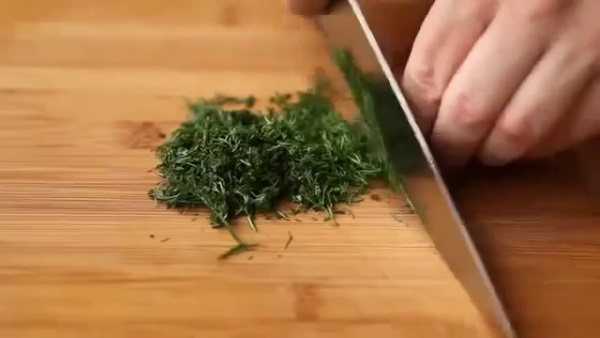
- The lemon should be washed, dried and cut into slices.
- You will need to coat the grill grate with olive oil, and do the same with the fish. Afterwards, you need to place the prepared ides on the grill, sprinkle with chopped dill and cover with lemon slices.
- Now you can cover the ides with another grill and cook them on the grill for 20 minutes. During the frying process, you can add freshly squeezed lemon juice to the fish.
When does the ide fish spawn
Spawning begins in spring, from April to June. During spawning, ide changes color. becomes more beautiful. The body acquires a metallic tint, the gill covers and head become golden. In the sun, ide shimmers with either a golden or silver tint. At water temperatures up to 10 degrees. Spawns in schools in shallow waters when spring waters flood. Where there is no water spill, go into small rivers with a slight current and a sandy bottom. The fertility of eggs is up to 100,000 eggs.
After spawning, the ide fish goes to its permanent location, where it can also be caught with a donk, with a wire, with a spinning rod and fly fishing. Small fish stay in schools, large fish stay in groups of two or three fish. It does not like noise and gets scared quickly; when catching it, you need to be quiet and calm in the pond.
The ide feeds mainly on plant foods and animal foods. It could be insects. mollusks, worms, as well as underwater vegetation. It turns out that it feeds only in the evenings and at night. Actually, at this time it usually needs to be caught.
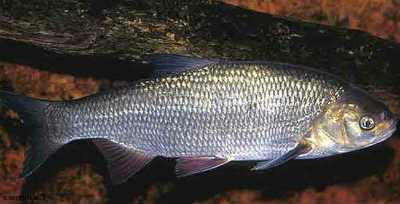
With vegetables
Ingredients included in the dish:
- ide - 300 g;
- large tomato – 1 pc.;
- large carrots - 1 pc.;
- onion – 1 pc.;
- dill – 2-3 branches;
- Sunflower oil – 2 tbsp. l.;
- lettuce leaves;
- salt;
- crushed black pepper.
Detailed instructions on how to prepare:
- It is necessary to clean the ide from scales and entrails, rinse it, remove moisture with napkins, cover with a mixture of salt and pepper on all sides and fill the carcass with dill sprigs.
- Vegetables need to be washed and peeled. You will need to chop the carrots into strips or grate them, cut the tomato into circles, and chop the onion into half rings.
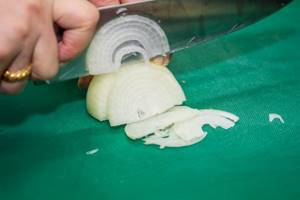
- After them, you need to put the prepared vegetables except the tomato in the baking sleeve, put the ide on top and cover it with tomato slices.
- Place the ide with vegetables in an oven preheated to 200°C and bake it for 20-25 minutes.
Stuffed with millet
It will take approximately 120 minutes to prepare ide stuffed with millet. The number of components is designed for 9 servings.
Required list of products:
- 3 ides with a total weight of 2.5 kg;
- 1 tbsp. millet;
- 3 tsp. table salt;
- 2 onions;
- 1 egg;
- 10 g dill;
- 2 tbsp. l. sunflower oil;
- 1 carrot;
- 1/4 tsp. allspice ground pepper.
Cooking ide stuffed with millet includes the following steps:
- The first step is to boil the cereal. You will need to rinse the millet in water several times, then pour it into a saucepan, pour in 2 tbsp. clean water and put on fire. When the water boils, you will need to cook the millet on low heat until the moisture is completely absorbed. The finished millet will remain a little hard.
- Next you should start preparing the ide. The fish carcass should be thoroughly cleaned of scales and washed in water. Now you need to cut the skin around the head with a knife, insert a fork into the hole with the blunt end and carefully separate the skin from the meat, then pull it towards the tail. When the skin reaches the fins, they should be cut, leaving them on the skin. If the fins are cut off completely, in the future you will need to sew up the holes in the skin with thread so that the minced meat does not fall out. The tail of the fish should also be cut off so that a small part of it remains on the skin.
- Now you need to cut off the head, rip open the belly of the fish and remove the entrails. You can place all the components of the fish except the entrails in a bowl. Use a fork to separate the meat from the bones. In this way you should prepare the remaining 2 carcasses
- Fish meat must be ground in a meat grinder with a fine grid. The bulbs should be peeled, cut into 4 parts and also put into a meat grinder. The washed carrots should be cut into very small cubes.
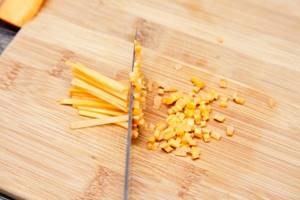
- Mix the meat, carrots and onions by adding 2 tsp. table salt, ground allspice, egg and cooled millet porridge.
- Afterwards, you need to fill the ide skins with the final minced meat and sew up the holes with thread, if any. The carcasses can be placed on a baking sheet, greased with sunflower oil, and placed in the oven, heated to 180 °C, for 50 - 60 minutes.
If desired, millet cereal can be replaced with rice.
In sour cream and mayonnaise
To bake ide in sour cream and mayonnaise, you need to allocate about 45 minutes.
You will need to take the following set of components:
- 1 ide;
- 3 tbsp. l. sour cream;
- 2 tbsp. l. mayonnaise;
- 1/2 tsp. table salt;
- 1/4 tsp. allspice ground pepper.
The ide fish shown in the photo with description can be prepared according to the following instructions:
- To start, you will need to remove the scales from the ide with a knife. After this, the fish should be washed under running cool water. Then you should rip open the ide and remove all the insides.
- Next, you need to cut off the head with the tail and side fins from the fish. The prepared ide should be cut into medium pieces and placed in a baking dish, sprinkled with half the salt and ground allspice and stirred.
- Then you need to pour mayonnaise, sour cream into the cup, add the remaining salt and mix the ingredients. 2/3 of the resulting mixture should be poured onto the fish, stir again, cover the mold with 2 layers of foil and place the mold in the oven. The oven must be preheated to 200 °C. Bake the ide for 15 minutes, then remove from the oven, remove the foil, place the remaining sauce on top and return to the hot oven for another 15 minutes.
If desired, you can add onions to the fish by placing its rings on the ide before baking. As a side dish for ide in sour cream and mayonnaise, serve baked or boiled potatoes along with a salad of fresh vegetables and herbs.
Tackle and bait
To successfully catch ide, a wide variety of gear is used (see table).
| Gear type | Rod | Line, mm | Loading capacity of the float/weight of the sinker/weight of the feeder, g | Hook/spoon | Spinning Reel Size |
| Float | 4-6 m, semi-parabola | 0,18-0,25 | 1,5-3,0 | №№ 8-10 | — |
| Bologna | 4-6 m, semi-parabola | 0,18-0,25 | 1,5-4,0 | №№ 8-10 | 2000-3000 |
| Donnaya | 2-3 m, test 30-100 g | 0,28-0,35 | sinker – 25-70 g | №№ 6-8 | 2500-4000 |
| Feeder | 2-3 m, test 30-100 g | 0,28-0,35 | feeder – 25-70 g | №№ 6-8 | 2500-4000 |
| Spinning | 2.5-2.8 m, medium action, test up to 20 g | 0,2-0,3 | — | Small poppers, spinners and vibrators No. 00-02 | 2000-2500 |
Find out more:
Minnow: description of the fish, habits and methods of fishing
You can also use fly fishing equipment consisting of a 2.5-3.5-meter medium-action rod, which is complemented by an inertial reel, a floating cord, 60-meter backing, a leash 0.1-0.2 mm thick, and a hook with a long shank No. 6 -8 or front sight.
The best baits for ide are:
- naiad, grasshopper, caddisfly;
- worm, maggot, bunch of bloodworms;
- peas, pearl barley, oats, dough, bread;
- furrow (larva) or adult cockchafer.
In winter, fishing is carried out using a vertical spinner (“clove”) or a jig. The bait is bloodworms, maggots, burdock moths or a “sandwich” of their combinations.
In warm water it is important to use bait. Millet porridge with the addition of fragrant vegetable oil (sunflower, rapeseed, flaxseed, hemp) has proven itself well. It is best to fill the feeder with special industrial mixtures for carp species.
Ide cutlets
Ide cutlets can be prepared in 60 minutes. The ingredients are enough for 7 - 8 servings.
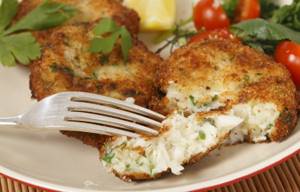
List of required components:
- 3 kg ide;
- 1 egg;
- 1 onion;
- 4 – 6 green onions;
- 1/2 tbsp. milk;
- 3 cloves of garlic;
- 1/4 tsp. allspice;
- 1 tbsp. semolina;
- 1.5 tbsp. l. table salt;
- 1/2 tbsp. sunflower oil.
Cooking ide cutlets includes the following steps:
- First, you will need to scrape off the scales from the ide and place it in the freezer for 7–8 hours. Ide should be frozen to make it easier to separate the meat from the bones. After freezing, the fish will need to be thawed, the head with side fins and tail cut off, and the entrails removed. The meat should be washed under cool water and removed from the bones using a fork or knife.
- Next, you need to peel the onion and garlic, cut the onion into several pieces and put it in a meat grinder along with the garlic cloves. The meat also needs to be minced. In the final mass you need to break an egg, add milk, 3 tbsp. l. semolina, allspice and table salt. Green onion feathers can be cut into rings and also added to the minced meat. The ingredients should be mixed well and the minced meat should be left at room temperature for 10 minutes. Thanks to semolina, the composition will become denser and will not fall apart.
- Now the remaining semolina should be poured onto the table, a portion of minced meat should be placed on it with a spoon, rolled in the semolina, forming a ball, and the workpiece should be pressed down, giving the shape of a cutlet. Thus, you need to form all the blanks.
- Then you can pour the oil into the frying pan, put it on the fire and heat the oil to about 150 °C. You can place the cutlets in hot oil. They need to be fried for 5 - 7 minutes, then turned over to the other side with a spatula and fried for another 5 minutes.
Ready cutlets can be served with rice or buckwheat porridge.
Baked with lemon
To bake ide with lemon, you need to allocate approximately 70 minutes.
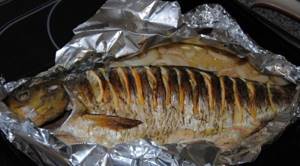
Ingredients required to prepare the dish:
- 1 ide;
- 3 onions;
- 1 lemon;
- 3 – 5 tbsp. l. table salt;
- 2 tbsp. l. olive oils;
- 1/4 tsp. ground white pepper.
Ide is a fish (photos and descriptions are presented in this article), which is prepared in the oven with lemon as follows:
- First you need to prepare the ide. It should be thoroughly cleaned of scales, rinsed with cold water and placed in a deep container. The ide should be filled with water, in which a large amount of salt must first be dissolved. Soaking ide in salt water for 2 hours will rid it of the smell of mud and algae.
- In the meantime, you can peel the onion and chop it into half rings. You can place a baking sheet on the table, cover it with foil and spread out the onions. You need to place the whole ide carcass on the onion and make several cuts on top from head to tail. The lemon needs to be washed, cut into slices and placed in the slits. You should also sprinkle the ide with a little salt and ground white pepper.
- Now you will need to cover the workpiece with a second sheet of foil, heat the oven to 200 °C and place the fish inside. You will need to bake the ide for 50 - 60 minutes, then remove the top layer of foil, pour some olive oil over the fish and return it to the oven for another 15 - 20 minutes.
Before serving, the ide should be cut into portions and served with a side dish of fresh vegetables.
How to catch ide fish
You can start catching ide in the spring, when the melt water melts, until the water clears. This is the period when ide goes to spawn in large schools. Fishing is successful in places where small rivers fall into larger bodies of water. You need to fish with bloodworms, crawlers, worms in the wire and with bottom gear.
The ide is found in the river in the same places, so after studying the reservoir, you can constantly fish. When fishing in the wire, you need to feed the ide. It is better to fish from a boat, or from the shore on small rivers. It is better to fish in the morning, but if you feed them, you can sit on the shore all day. As bait you need to use maggots, bark beetles, caddis flies, and larvae. It is very successful to catch dragonfly larvae, but this period is short, you must not miss it.
You can also catch butterflies, grasshoppers, and any insects that live near water. Fly fishing will also be successful using the same bait. You need to feed ide with grains, cereals, steamed peas, and bran. The bait is lowered to the bottom in a net. And you can fish with the same baits as in bait.
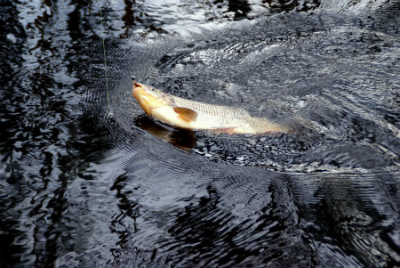
When fishing with bottom gear, the dark time of day is best. In the middle of the night, the ide takes a break from biting, but then continues to take bait until dawn. You can use the same bait - worms, maggots, pieces of meat, crawlers, cereals. The bait is mixed with clay and thrown into the fishing areas.
In the evening, the ide fish often rises to the surface of the reservoir and feeds on insects that swim on the surface or fly low above the water. Fly fishing will be successful during this period. Hooks should be taken according to the nozzle, with a short shank. Use fishing line depending on the catch and the size of the fish. For fishing rods it is 0.25 mm, for bottom fishing rods 0.35 mm. Leashes of medium length are suitable.
The fish takes the ide confidently and quickly, but is sometimes cautious on the donk. Trying to smoothly pull the bait off the hook. At the moment of trying to pull, you need to make cuts. When caught, the ide actively resists and does somersaults. But it gets tired quickly, but when pulling it out it is better to use a landing net.
It is good to catch ide with a spinning rod in the summer. spinners of size 0, weighing up to 1.5 grams or size 1, weighing up to 3 grams, brass or copper, pear-shaped, are suitable for this fishing The length of the spinners and wobblers should not be more than 4 cm. The ide has a small mouth, and it is not easy for it to take larger baits. Threesomes need to be hidden in pieces of fur. You can fish without a load or with a small load. Take fishing line no thicker than 0.4 mm. Lures must be tied directly to the fishing line, without leashes. Only if you need to constantly change baits, it is better to use a 20-number fastener.
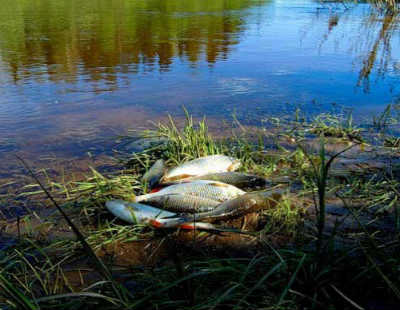
Wobblers should also be taken in small sizes, with medium or deep depth. It is better to take a thin and soft fishing line; it will absorb the jerks of the fish when catching. The diameter of the fishing line should be no more than 0.16 mm. Thicker ones are better to use when using spinners. To quickly change gear, it is best to have spare spools with you, with different fishing line in diameter.
a reel that is light, small in size, and it is better that it has a front clutch. Any spinning rod with good sensitivity can be used. But if you are specially tuned to catching ide, then a spinning rod with a dough of 12 grams and a length of 3 meters is better suited.
You need to fish the entire area of the reservoir gradually. We need to fish in a current of 1.5 meters at the surface, in mid-water we need to fish in a slow current. The bait is brought slowly, changing speed. Either slowing down or speeding up the wiring. You need to make sure that the line is constantly taut and always be ready to hook.
In autumn, the ide fish stops actively pecking due to the fact that it switches to feeding on plants. In winter, ide is best caught at the end of winter, when the water is warm, at a low current and depth. You need to fish with jigs and float rods; you can use worms and bloodworms as bait. Areas below dams, near the shores of small bodies of water, and at medium depths are suitable for fishing. Also, don’t forget about bait.
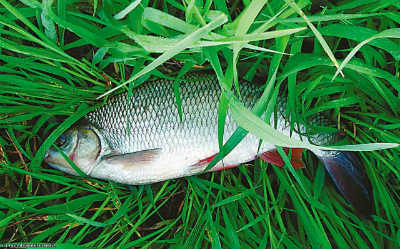
Some tips for catching ide:
- At the end of winter and beginning of summer, the ide begins to have a post-spawning glutton. At this time, it feeds on various vegetation that covers the stones and trees. Therefore, at this time it is best to catch it using a bunch of algae.
- In summer you can fish with natural or artificial bait.
- You can catch ide on donkeys all day long, with thinner and more sensitive equipment.
- In the fall, ide begins to hunt fry; at this time, baits that imitate small fish and frogs work well.
- The ide begins to take bait with the onset of the first ice, and can continue throughout the winter.
- In winter, ide constantly moves in search of food and water with a high oxygen content. In clear weather it reaches shallow areas of the reservoir. Fishing is best in the morning.
- At the end of winter, ide can also be caught using float gear and a jig. As bait you need to use bloodworms, worms, maggots.
- When fishing with a spinning rod, it is best to use a slow retrieve near the bottom, using a rotating spoon. It is better if the spinner has plumage in the form of hair on the tee.
- When fishing, you should not make noise or show yourself to the fish. She is a very sensitive and shy fish. The best way to hide from fish on the shore is to go into knee-deep or waist-deep water. You just need to make sure that the shadow does not fall on the water in front of you.
- The caught fish must be tired without being pulled out of the water. She has thin lips and strong resistance. Therefore, there is no need to rush to pull it out of the water right away.
I told where the ide fish lives, and how to catch the ide fish.
To Home Page.
Stuffed with sorrel
To prepare ide stuffed with sorrel, you need to prepare the following set of ingredients.

Scroll:
- 1 ide;
- 1/2 bunch of sorrel;
- 3 cloves of garlic;
- 1 tsp. table salt;
- 1/2 tsp. freshly ground pepper;
- 3 tbsp. l. sour cream;
- 4 potato tubers.
Cooking ide stuffed with sorrel includes the following items:
- The first step is to remove the scales from the ide, cut the belly and gut it. The fish should be washed in water and dried with a towel. On one side of the ide, you need to make deep cuts every 1.5 cm and rub the carcass with a mixture of table salt and freshly ground pepper.
- Next, you need to peel the garlic cloves, crush them a little with a knife and chop them very finely. The sorrel will need to be washed, shake off excess moisture and also finely chopped. Garlic must be mixed with sorrel and the mixture should be stuffed into the cuts on the fish.
- Then the potato tubers will need to be washed and peeled with a vegetable peeler.
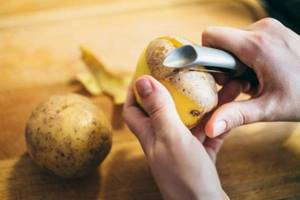
- Potatoes should be cut into circles of medium thickness. You can grease a glass baking dish with oil, place potato mugs on the bottom, sprinkle them with table salt and ground pepper and grease with 2 tbsp. l. sour cream.
- Now you can put the ide on the potatoes, brush with the remaining sour cream and stuff the fish with the remaining sorrel and garlic, after salting the ide inside. The ide needs to be placed in an oven heated to 180 °C and baked for 30 minutes, then take out the mold, pour in a little water and return to the oven for another 30 minutes.
The ide stuffed with sorrel should be served whole, then cut into portions and placed on plates lined with lettuce. It is recommended to marinate the ide fish, shown in the photo with the description, for at least 2 hours. It can be cooked in a slow cooker in the “Frying”, “Stewing” or “Steaming” mode.
